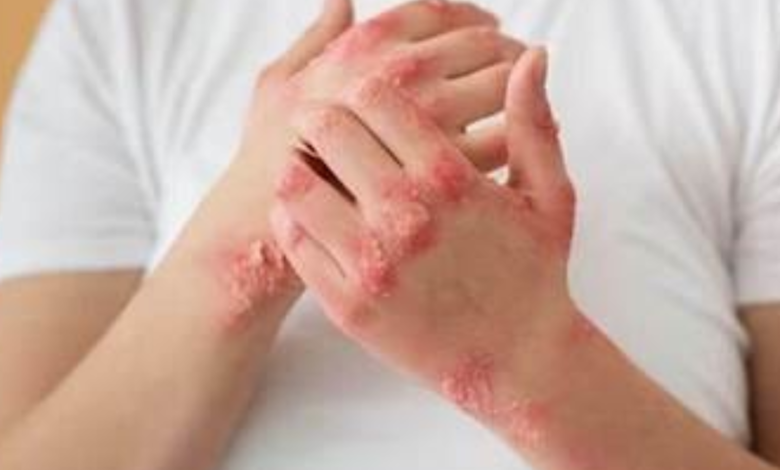Blisterata: A Comprehensive Guide to Understanding and Managing This Condition

Blisterata might not be a term you hear every day, but dealing with it can be quite bothersome and, in some cases, debilitating. This condition is marked by the presence of fluid-filled blisters on the skin, most commonly appearing on the hands, feet, and legs. Although many people may encounter this issue, it is particularly prevalent among athletes, outdoor enthusiasts, and those in certain professions who frequently handle such skin conditions.
This guide provides a thorough exploration of Blisterata, including its causes, symptoms, diagnostic procedures, treatment options, prevention tactics, possible complications, and advice on recovery. By the end, you will be well-equipped with the knowledge needed to effectively manage and prevent Blisterata, whether you’re an athlete pushing your physical limits, someone who loves exploring the outdoors, or a healthcare professional caring for patients.
Causes of Blisterata
Blisterata, like other blister-related conditions, can result from a variety of factors, each contributing differently to the development of these fluid-filled skin pockets. Understanding these causes is key to preventing and effectively managing the condition.
Friction
Friction is one of the primary causes of Blisterata. When the skin is repeatedly rubbed against a surface, such as shoes or sports equipment, it generates heat and friction, which can damage the skin enough to form blisters. This is especially common among runners, hikers, and athletes wearing poorly fitting footwear or those not using adequate protective gear. The friction causes the skin layers to separate, leading to fluid accumulation and blister formation.
Burns
Burns are another significant cause of Blisterata and can result from thermal (heat), chemical, or even sunburn exposure. In these situations, the body forms blisters as a protective mechanism to shield underlying tissues and initiate the healing process. Outdoor enthusiasts and professionals working in environments with high heat or hazardous chemicals should be particularly vigilant to prevent burns.
Allergies and Infections
Allergic reactions and infections can also lead to Blisterata. For example, contact dermatitis can cause blistering as a reaction to allergens such as poison ivy, nickel, or specific cosmetics. Blisters may also form as a response to infections, particularly those caused by bacteria or fungi. Medical professionals often see such blisters in patients with weakened immune systems or those exposed to unsanitary conditions.
Symptoms and Diagnosis
Identifying the symptoms of Blisterata and obtaining an accurate diagnosis are crucial steps in effective treatment and management. Early recognition of the condition allows for prompt intervention, reducing the risk of complications.
Appearance of Blisters
Blisters from Blisterata usually manifest as small, fluid-filled sacs that may appear clear or cloudy, depending on whether an infection is present. These blisters are often accompanied by redness, swelling, and pain around the affected area. In some cases, the blisters may burst, creating open sores that, if not properly cared for, can become infected.
Diagnosing Blisterata
To diagnose Blisterata, healthcare providers typically begin with a physical examination of the blisters and a discussion of the patient’s medical history and recent activities. This helps pinpoint potential causes, such as recent friction, burns, allergies, or infections. If the cause isn’t immediately clear or an infection is suspected, additional tests, such as skin swabs, cultures, or blood tests, might be necessary to identify underlying conditions.
Accurate diagnosis is essential as it informs the treatment plan and helps prevent future occurrences. For athletes and outdoor enthusiasts, understanding the diagnosis can also guide necessary adjustments in gear or routines to avoid recurrent issues.
Treatment Options
Managing Blisterata involves a combination of home remedies and professional medical treatments, depending on the severity and underlying cause of the blisters. Timely and appropriate care can alleviate discomfort and prevent complications.
Home Remedies
For mild cases of Blisterata, several home remedies can be effective:
- Keep Blisters Clean: Gently wash the affected area with mild soap and water to avoid infection. Do not pop the blisters, as this can lead to infection.
- Reduce Friction: Use bandages, moleskin, or padding to protect the blistered area from further friction. Make sure your footwear or equipment fits properly.
- Apply Antibiotic Ointments: If a blister bursts, applying an over-the-counter antibiotic ointment can help prevent infection. Cover the area with a sterile bandage afterward.
- Elevate and Rest: Elevating the affected area and resting can help reduce swelling and promote healing.
Medical Interventions
For more severe cases or if complications develop, medical attention may be necessary:
- Drainage: If a blister is especially large or painful, a healthcare provider might perform a sterile drainage procedure to relieve discomfort.
- Prescription Medications: For blisters caused by infections, doctors may prescribe antibiotics or antifungal medications.
- Advanced Dressings: Specialized dressings that promote faster healing and reduce pain may also be used by medical professionals.
Knowing when to seek professional help is crucial. If a blister shows signs of infection (increased pain, redness, warmth, pus) or if you have underlying health conditions that complicate healing, consult a healthcare provider promptly.
Prevention Strategies
Preventing Blisterata is always preferable to treating it after it occurs. Adopting some practical strategies can help avoid the discomfort and potential complications associated with blisters.
Proper Footwear
Wearing well-fitting shoes that provide adequate support and cushioning is vital. For athletes and outdoor enthusiasts, investing in high-quality, activity-specific footwear can make a significant difference. Be sure to break in new shoes gradually and replace them when they start showing signs of wear.
Hygiene
Maintaining good hygiene is essential in preventing Blisterata. Keep your skin clean and dry, especially in areas prone to sweating or friction. Regularly change your socks, and consider using moisture-wicking materials to keep your feet dry. For those handling chemicals or working in high-heat environments, wearing protective clothing and thoroughly washing your skin after exposure is crucial.
Protective Measures
Using protective gear can significantly reduce the risk of blisters. For example, wearing gloves while working with tools or sports equipment can prevent friction-related blisters on the hands. Similarly, using padded insoles, orthotics, or blister-prevention tapes can protect your feet during physical activities. Applying lubricants or powders to reduce friction in high-risk areas can also be helpful.
Complications and Recovery
While Blisterata is generally manageable, complications can arise if blisters are not properly cared for. Understanding these risks and following appropriate recovery guidelines is essential.
Potential Complications
- Infection: A common complication is infection, which may present with increased pain, redness, warmth, and pus. Infections can spread, leading to more severe health issues if not treated.
- Scarring: Improper care, especially if blisters are popped intentionally, can result in scarring. This is particularly concerning for visible areas or individuals prone to developing keloids.
- Delayed Healing: Factors like continued friction, poor hygiene, or underlying health conditions can slow the healing process, prolonging discomfort and increasing the risk of complications.
Healing and Recovery
To ensure a smooth recovery and promote healing, follow these steps:
- Rest and Protect: Allow the affected area time to heal by minimizing activities that cause friction or pressure. Use protective coverings to shield blisters from further irritation.
- Maintain Cleanliness: Keep the blistered area clean and dry to prevent infection. Change dressings regularly and avoid using harsh chemicals that could irritate the skin.
- Monitor and Seek Help: Keep an eye on the healing process. If you notice any signs of infection or if the blister doesn’t improve within a few days, seek professional medical advice.
By taking these steps, you can speed up recovery and reduce the chances of complications.
Conclusion
Blisterata, though common and often manageable, can be a significant inconvenience for athletes, outdoor enthusiasts, and medical professionals. By understanding its causes, recognizing symptoms, and knowing how to treat and prevent blisters, you can minimize their impact on your daily activities and overall well-being.
Remember, prevention is always better than cure. Invest in proper footwear, maintain good hygiene, and use protective measures to keep blisters at bay. If symptoms persist or complications arise, seek professional medical advice to ensure proper care and recovery.
By staying informed and proactive, you can effectively manage Blisterata and continue to pursue your passions without interruption. Stay safe, stay active, and take care of your skin!
Frequently Asked Questions
What are the main causes of Blisterata?
Blisterata primarily results from repeated friction, pressure, or heat on the skin. Common activities that can cause Blisterata include long-distance running, hiking, or working with tools or equipment for extended periods. Ill-fitting footwear, excessive sweating, and exposure to harsh chemicals can also contribute to the development of blisters.
How can I treat an existing blister at home?
To treat a blister at home, start by cleaning the affected area with mild soap and water. Protect the blister from further friction using bandages, moleskin, or padding. Applying over-the-counter antibiotic ointment can help prevent infection if the blister bursts. Elevate and rest the area to reduce swelling and promote healing. Avoid popping the blister to prevent infection and scarring.
When should I see a doctor for a blister?
You should seek medical help if the blister is exceptionally large, painful, or shows signs of infection (increased pain, redness, warmth, or pus). Additionally, if you have underlying health conditions like diabetes that complicate healing, or if the blister is caused by an infection, it is essential to consult a healthcare provider promptly.





